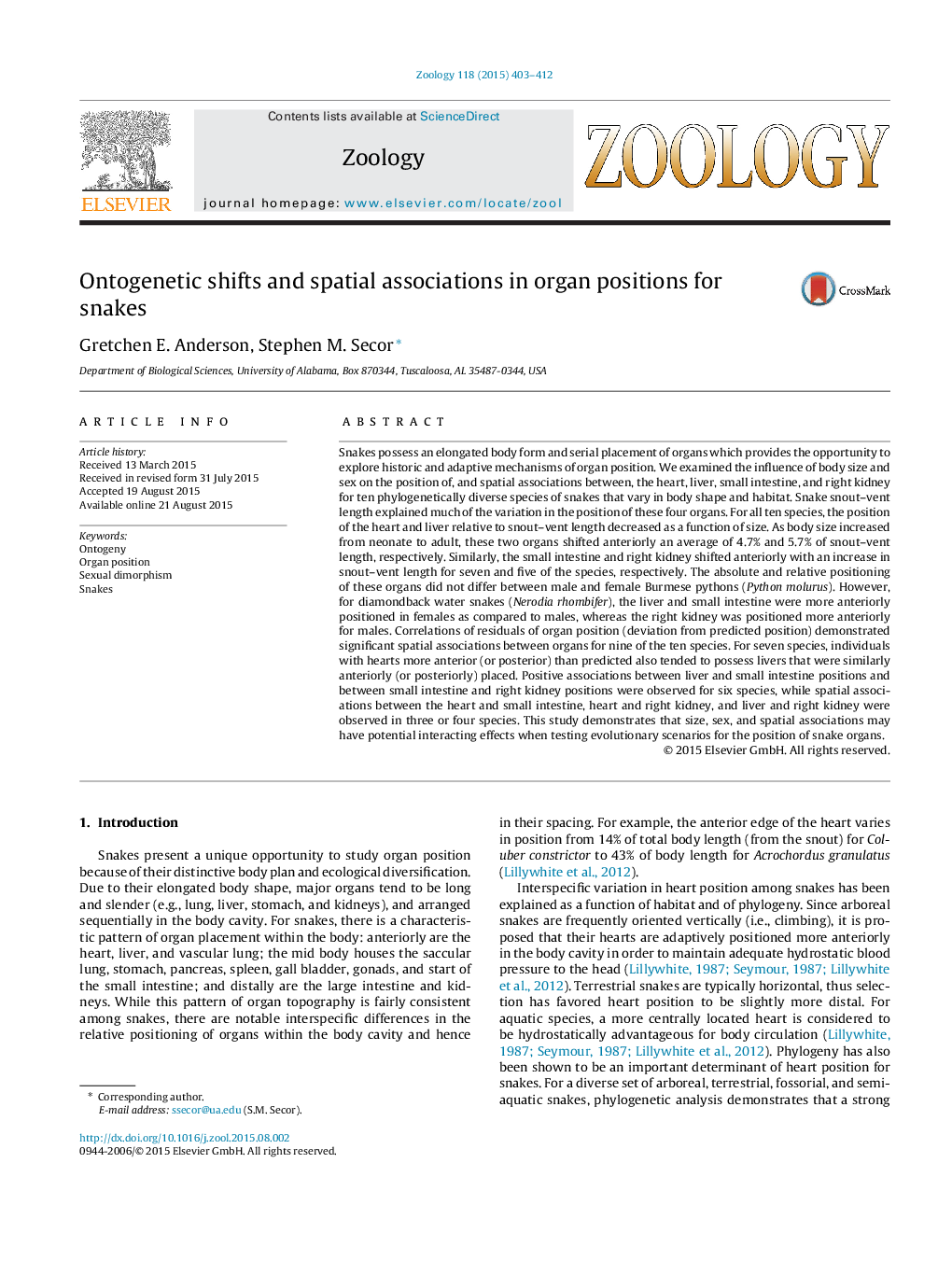| Article ID | Journal | Published Year | Pages | File Type |
|---|---|---|---|---|
| 2791031 | Zoology | 2015 | 10 Pages |
Abstract
Snakes possess an elongated body form and serial placement of organs which provides the opportunity to explore historic and adaptive mechanisms of organ position. We examined the influence of body size and sex on the position of, and spatial associations between, the heart, liver, small intestine, and right kidney for ten phylogenetically diverse species of snakes that vary in body shape and habitat. Snake snout-vent length explained much of the variation in the position of these four organs. For all ten species, the position of the heart and liver relative to snout-vent length decreased as a function of size. As body size increased from neonate to adult, these two organs shifted anteriorly an average of 4.7% and 5.7% of snout-vent length, respectively. Similarly, the small intestine and right kidney shifted anteriorly with an increase in snout-vent length for seven and five of the species, respectively. The absolute and relative positioning of these organs did not differ between male and female Burmese pythons (Python molurus). However, for diamondback water snakes (Nerodia rhombifer), the liver and small intestine were more anteriorly positioned in females as compared to males, whereas the right kidney was positioned more anteriorly for males. Correlations of residuals of organ position (deviation from predicted position) demonstrated significant spatial associations between organs for nine of the ten species. For seven species, individuals with hearts more anterior (or posterior) than predicted also tended to possess livers that were similarly anteriorly (or posteriorly) placed. Positive associations between liver and small intestine positions and between small intestine and right kidney positions were observed for six species, while spatial associations between the heart and small intestine, heart and right kidney, and liver and right kidney were observed in three or four species. This study demonstrates that size, sex, and spatial associations may have potential interacting effects when testing evolutionary scenarios for the position of snake organs.
Keywords
Related Topics
Life Sciences
Agricultural and Biological Sciences
Animal Science and Zoology
Authors
Gretchen E. Anderson, Stephen M. Secor,
